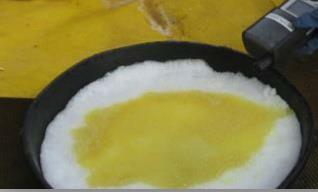Point Thomson Export Pipeline Condensate Fact Sheet




- What is Natural Gas Condensate?
- Condensate is a liquid, high-quality hydrocarbon, similar to kerosene or diesel.
Condensate is a mixture of light liquid hydrocarbons, similar to a very light (high API*) crude oil. It is typically separated out of a natural gas stream at the point of production (field separation)when the temperature and pressure of the gas is dropped to atmospheric conditions.
Condensate is mostly composed of Natural Gas Liquids and naphtha range material, and has an API from 45 to 70+.
Once separated from natural gas, condensate is generally treated like a crude oil. It can be blended with other heavier crude streams or sent to market directly by pipeline or tanker. Condensate can be processed in a refinery if blended with more conventional crude. Alternatively, it can be sent directly to a condensate splitter for separation into its components.
-McKinsey and Company* API gravity is a commonly used index of the density of a crude oil or refined products. API stands for the American Petroleum Institute, which is the industry organization that created this measure. – McKinsey and Company
- What does Natural Gas Condensate look like?
- Natural Gas Condensate is often described as straw-like in color. It can vary from clear to light brown depending on the quality.


Photo Credit: Alaska Clean Seas

 Indicates an external site.
Indicates an external site.